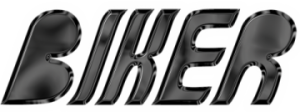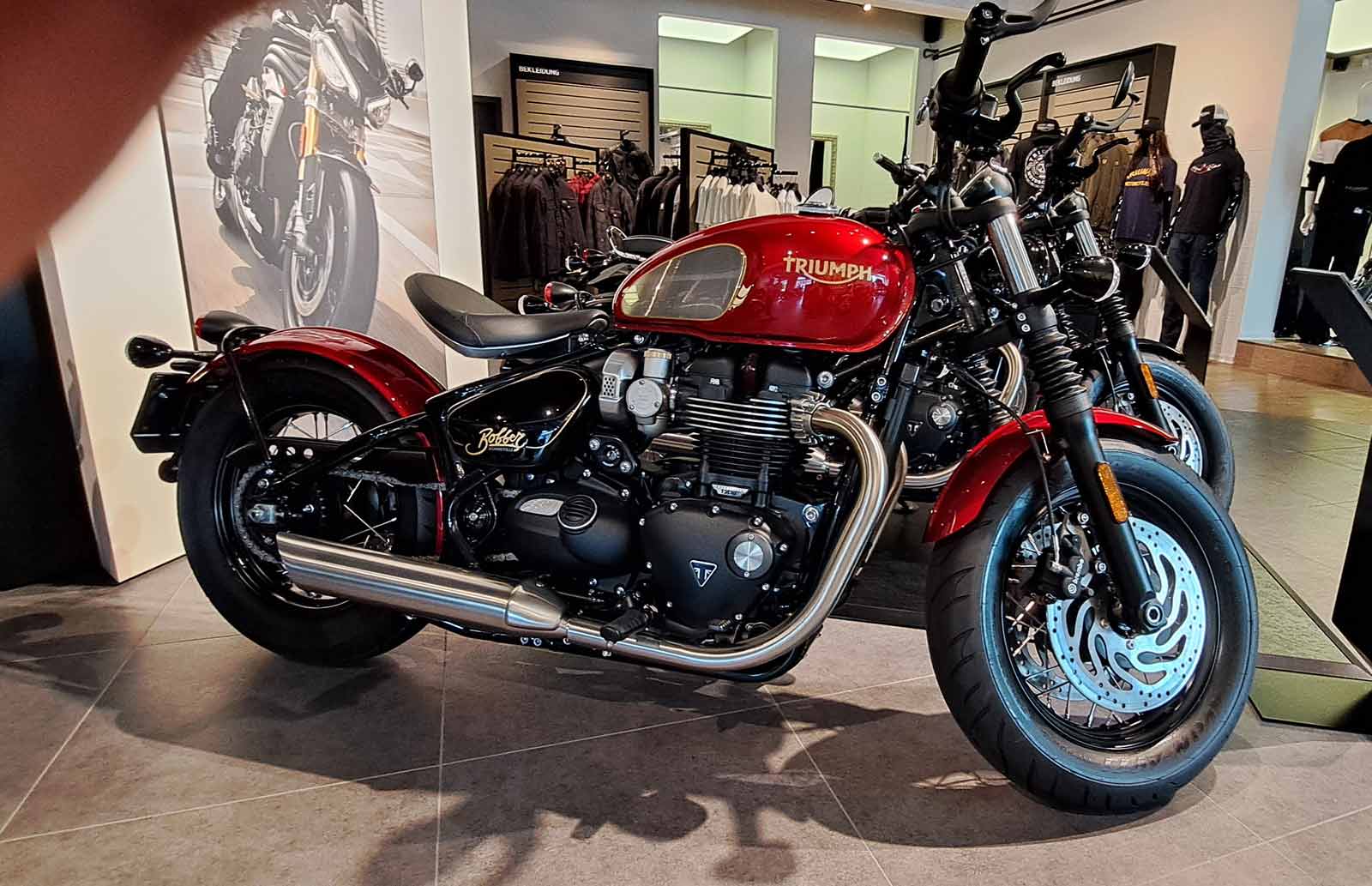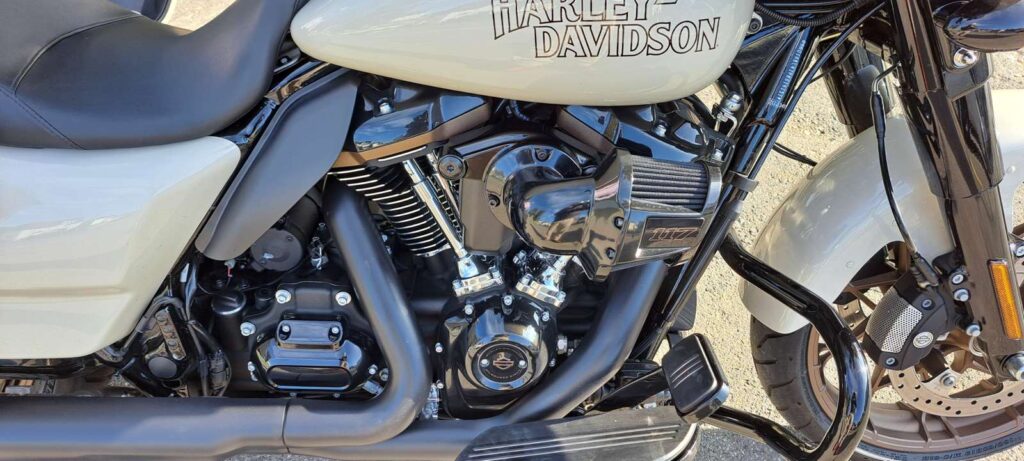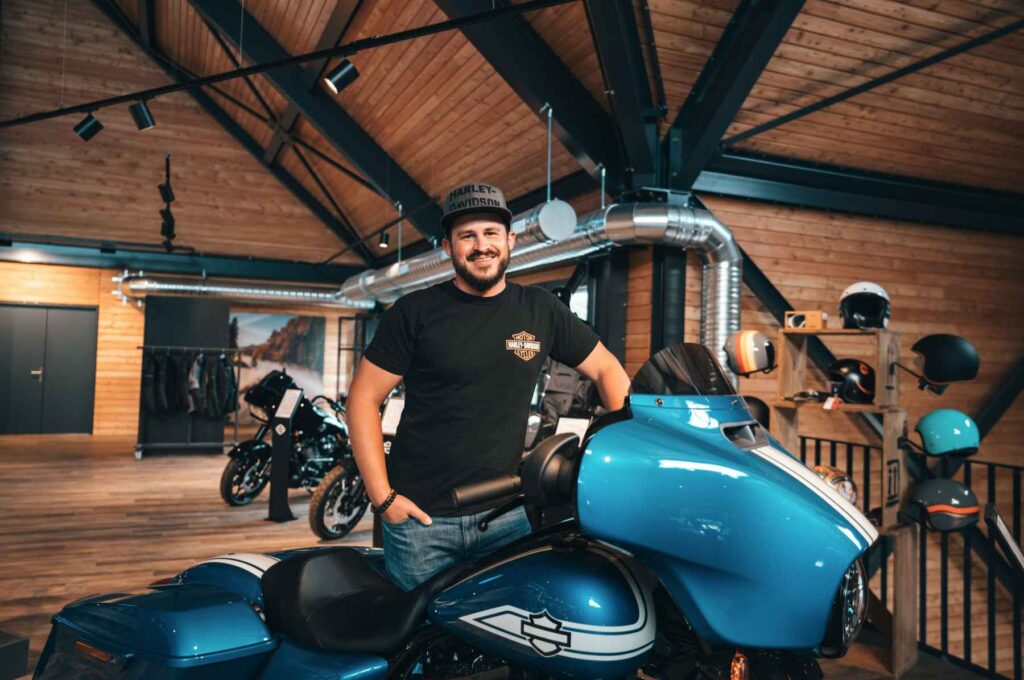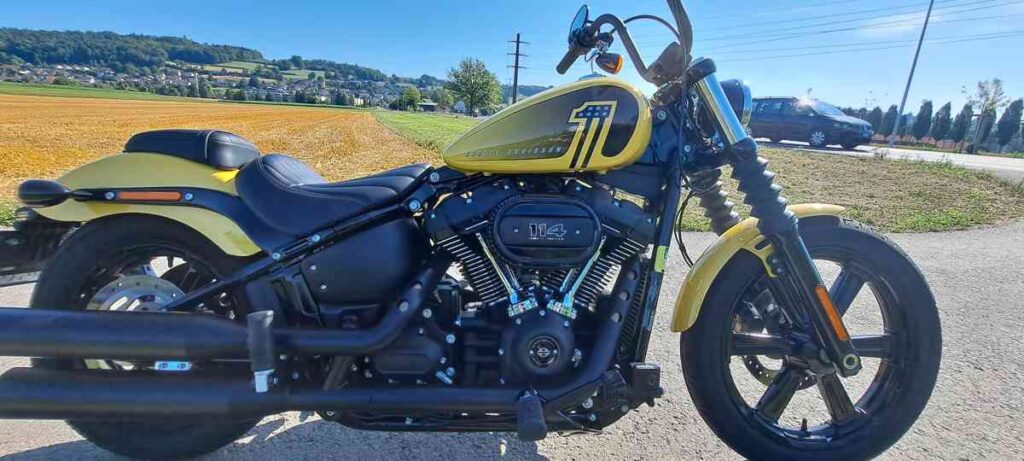Reliable, powerful, taut and typically British stiff: These are probably the characteristics that would accurately describe this British power warhorse and yet, there is much more. The test of the Triumph Bobber is like a voyage of discovery of a motorcycle.
What's exciting about this story isn't the horsepower and the other bare numbers; anyone can read about them in Triumph's specifications. What's more exciting is the piecemeal approach between machine and man, because the Bobber isn't necessarily a motorcycle that suits a rider right off the bat. No, it is typically British and thus always a little bit stiff. You don't warm up to the bike right away, it feels much more like taming a bear you've caught, which takes time and requires a lot of patience until harmony sets in, but the more exciting the story and the experience are, and so afterwards the closer is the relationship between machine and man.
The or The (just for german readers)
In german language there exist a difference by a "female" "the" and "male" "the". Often you read "the (female)" Bobber, as well as one says "the (female)" Kawasaki, "the (female)" Honda, "the (female)" Yamaha or "the (female)" Harley. It is actually amazing that the names of the brands and models of motorcycles in german are female and this in a clear male domain. But you also find scribblers who call "the (male)" Bobber male. I feel the same way. The bike is very masculine and I liked it better to give the model a masculine article (declension). It feels more correct to me, but if someone prefers to say "the (female)" bobber, that's okay with me too.
The term "Bobber"
Just as an aside, let's take a little detour to the term "bobber". A bobber is a naked bike with a short fender, floating seat, sturdy tank and small balloon tires. Bobbers have been around since the 1920s, and have been superseded or overtaken since the 1960s by choppers, which have larger tires, more embellishments and longer forks. Where the term really comes from I don't know, but I could think that the term was created because of the "floating" saddle. A bobber bike always has a strong touch to motorcycle history because of its distinctive style.
The approach
When I first got on the bike, I was amazed at how much trouble I had moving the front wheel. The entire weight distribution, the steering head angle, the handlebar width, the dimension of the tire and the entire geometry and weight distribution of the bike are such that it feels as if the front tire has suction cups with which it sucks itself onto the asphalt. And turning into the corner wasn't easy at the beginning either, if you wanted to keep it in a clean balance. It takes time to get the hang of how you have to put the machine into the corners and how to create a pleasant cornering dynamic. You can't do that overnight. That's something you absolutely have to keep in mind during a test ride! It's similar to a relationship: The partners have to get closer to each other until the relationship works harmoniously in everyday life, otherwise it won't work. In case of the relation with a bike, of course, that's the rider's job.
The peculiarities of the bobber
Without going into every technical detail, I want to highlight some of its peculiarities that make up the Triumph Bonneville Bobber. On the one hand, it is with a Seat height of 70 cm is naturally very low, which will certainly accommodate small riders and women. Thereby, the floating single saddle is a uniqueness in itself anyway, which always provides sufficient comfort even over a long period of time - you also have to make that first. "Keyless" There's no such thing here: With the Bobber, the ignition key stays in the lock! And you must never forget that. If you're used to other motorcycles where you carry the ignition key in your pants pocket, you'll probably feel the same way I did and leave the bike a time or two without removing the ignition key, which is of course an invitation to all motorcycle thieves. So, get that into your head or connect the key with your pants. When opening the throttle, I would show some restraint at the beginning, because the Powerthat the bobber develops is really brute! 1200 cubes, 78 hp and 106 Nm of torque don't sound like much, but in reality they are. If you open the throttle in 2nd or 3rd gear, you really have to hold on to the handlebars if you don't want to see the bike go on without you. The massive drive almost blows you off your stool!!! No shit!!! So hold on tight before you step on the gas! The Suspension of the bobber is tight and makes itself felt in the back when you ride with gusto over a bumpy surface. Dear greetings to the back! This is not for old grandpas with back problems, unless you replace the standard suspension strut and set it to comfortable, which of course could go to the disadvantage of the road holding. The clutch lever is located in perfect size on perfect place, so you never have a disturbing feeling when you search for the clutch with your foot. There are motorcycles that bother with a small clutch lever that presses on the toes. That's not the case here, everything sits and runs perfectly and the clutch thanks you with a respectable clack when you engage the next gear. And finally a look at the Instrument board: here you simply have to compliment Triumph. The button of the horn is colored red and stands out clearly in color from the others control elements. This is a blessing for all those who, like me, have searched in vain for the horn because it was simply lost among all the other buttons in the same color. Until you have found the horn, the situation is usually already over and you are annoyed about the stupid arrangement. Triumph has solved this in an exemplary way on the Bobber. The large speedometer is also a feast for the eyes. It's super legible, at night the Triumph sign lights up in the middle - very sexy - and even the information in the small on-board computer is always easy to see. The only minor criticism is with the turn signals. Here, the long-established concept, as known from the Japanese 40 years ago, that a turn signal lever for both directions is located on the left side and that you have to switch it off manually even after turning into the new direction. There are motorcycle models today that stop flashing automatically when the change of direction has been completed. Triumph would have to consider something like that for the future. But apart from this detail, there's nothing to complain about, but much more to praise. In addition to all the features, the Bobber offers the rider a constant low growl as background music, along with a chirp that turns into a deep roar when the throttle is turned up to full. The quiet grips are pleasing on longer rides, ensuring that the hands don't fall asleep due to constant vibrations.
A bike with character
The Triumph Bonneville Bobber is not an 0815 machine. No, quite the opposite. The classic, unique vintage look is just the symptomatic expression of its uniqueness. The ever-rumbling, powerful engine, its tremendous brute force, its very own geometry and cornering dynamics that require time to get used to, and its many special features round out this one-of-a-kind machine into a wonderful machine. In the end, it feels like you're sitting on a British warhorse that you can safely take to and through war: reliable, powerful, taut and a bit stiff. And the longer you ride the Bobber, the more you take it to your heart, because it's one of the few motorcycles where that can really happen to a rider.
TECHNICAL DATA | |
|---|---|
ENGINE | |
Type | Liquid-cooled 8V twin-cylinder SOHC in-line engine, 270° crank pin offset
|
Cupic capacity | 1200 cc |
Compression | 10,0 : 1 |
Nominal power | 78 hp at 6,100 rpm |
Max. Torque | 106 Nm at 4,000 rpm |
FUEL | |
Mixture preparation | Sequential electronic multipoint injection |
Tank capacity | 12 liters |
POWER TRANSMISSION | |
Clutch | Multi-plate wet clutch with torque support |
Transmission | 6-speed |
End drive | Chain |
CHASSIS, MASS | |
Frame | Tubular steel loop frame, tubular steel twin-sided swingarm (rear swingarm) |
Wheelbase | 1500 mm |
Handlebar width | 800 mm |
Steering head angle | 25.4 degrees |
Caster | 92.0 mm |
Seat height | 690-700 mm |
Weight | 251 kg |
SUSPENSION | |
Front suspension | 47 mm Showa cartridge fork |
Rear suspension | Central suspension strut with deflection |
WHEELS, BRAKES | |
Wheel front | Spoked wheel, 32 spokes, 16 x 2.5 inch |
Tires front | MT 90 B16 |
Wheel rear | Spoked wheel, 32 spokes, 16 x 3.5 inch |
Rear tires | 150/80 R16 |
Front brakes | 310 mm double brake disc, Brembo double piston floating caliper, ABS |
Rear brakes | 255 mm single disc, Nissin single piston floating caliper, ABS |
PRICE | |
|---|---|
Price | CHF 15'995.00 - 16'415.00 (depending on color) |
